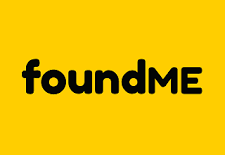Soon new recruits are hired from your team, if leadership quality is not addressed


In fact, startups are special in terms of recruiting and retaining employees. Recruitment is often a stepping stone and a follow-up to funding cycles. Also, startups are often short on management resources. While a mature company grows leaders internally and recruits more junior professionals people, a startup recruits leaders and professionals more equally. Startups usually duplicate their staff frequently. Thus, the high share of new employees and the lack of management resources make startups very special and vulnerable.
Everybody knows that the rapid growth of staff is changing the culture. Every change needs to be managed. Culture eats strategy (and also capital and technological advantage) for breakfast. New people need to be led. Existing employees need to be managed. People come to work for a brand, a salary and benefits. But they leave because of bad management. A good leader is one who wants to take the time to make an employee’s working life so interesting, inclusive and value-creating that a person does not think about changing the employer and knows how to achieve it
Management quality helps to survive
So management quality is a competitive advantage. What does management quality all about? About personal qualities? About knowledge? Behavior patterns? Probably all of them and much more. Mainly the leader has to be aware of his role. The role of manager is to enable the employee to work in the best possible way and to enable him or her to achieve results that he or she would not achieve without the leadership and guidance of the manager. The same goes for the team. The manager opens doors, connects the ends and creates synergies. He charges, heats, cools, feeds and provides fertilizes. “Leaders eat last!” That’s what S. Sinek said. What did J. Watson tells Sherlock?
However, the challenge is becoming increasingly difficult. Everyone values openness and transparency, but also confidentiality and anonymity. Everyone wants attention. It’s quite a task without smart tools.
What’s new on the leader’s (digital) desktop?
There are many new elements in today’s crisis and rapid economic development. Distance, distance and distance. Physical, mental and cultural distance. Men are social animals and need contact. Also an accountant, assembly line operator and a programmer. Contact is hampered by Covid restrictions, working in different offices, cities, countries, and also by multicultural environments. A successful leader must have people skills, as always. But he must also be a good user of apps and gadgets to connect people and connect with people. How often do you have 1:1 meetings, what’s on the agenda? What to consider for a standup or off-site meeting? What software to use for daily temperature mapping? Does the project team’s information space reflect the health of the project or the health of the team?
We have to focus on the purpose. It is important that an employee is in the right team, in the right role and satisfied with the environment, the manager, the processes, the use of time, colleagues, ethical values, the environment and much more. These areas must inevitably be all permanently on a manager’s desk, at least on a sufficient level to reflect the situation and any changes. It’s not just textbook wisdom. At Moticheck, we see that this is exactly what our customers are experiencing.
Shorter management cycles require faster decision making and more tools
At Moticheck we believe that employees are the sensors of the operations. The leaders must have devices that transmit information from sensors in a reliable and operational manner to easy-to-read information. That’s the job Moticheck’s does for its customers daily. The annual satisfaction surveys are history. Annual development interviews as well. The quarterly surveys are also history. Management cycles have been significantly shortened. What unit is a year in an employment or human relationship after all? Friendship is not defined by the number of years. Facebook, for example, is not a quarterly magazine. People are used to exchanging information on a daily basis. It is worth taking the time to consider it.
We have learned from our customers that so far employers have been conducting people surveys too seldom and in only limited fields of employee experiences. Often the employers opt for a trade-off for asking a limited number of questions when conducting a survey on quarterly or monthly bases. They can’t ask questions about every employee experience area as it would make the surveys clumsy and put employees off. But from the engagement and leadership point of view one should ask all of these questions. Otherwise you have only half the information. Therefore the modern employee experience survey is an ongoing process. Always on systems allow asking hundreds of questions instead of five or ten. The difference in quantity really matters in this case. Data has the power. And today’s surveys are online, providing real-time data to leaders and teams when the time is right in the process. Moticheck for example provides up-to-date data and covers every aspect of working life on daily bases.
It is important to understand the function and the impact of tools. We have many applications for exchanging operational information. Most are suitable for the transmission of written information, video communication as well as the management of notes and documents on a daily basis. This is both in the groups and 1:1 situations. There are also very good HR and KPI or OKR management applications for exchanging direct job role-based information and open feedback. And then there are surveys that map out assessments of the job role more broadly and involve employees confidentially to talk about the pros and cons of the organization. The importance of the latter is increasing, as the fast pace and distance force us to focus on the moment, and therefore the big picture is often full of blind spots. This however, it is costly. The big picture is often what the employee sees the cracks.
1:1 meetings are not enough to talk about everything an employee experiences. The more changes and the more people, the more gray areas. What to do as a manager in order to keep an employee? It will be important to use modern technologies and listen to the employee, as well as systematize this information. Employee listening experience and mapping in all areas of work life has not yet been as important as it is today.
Martin Rajasalu
for FoundMe.io



